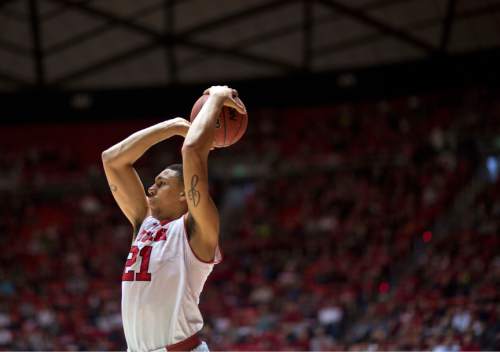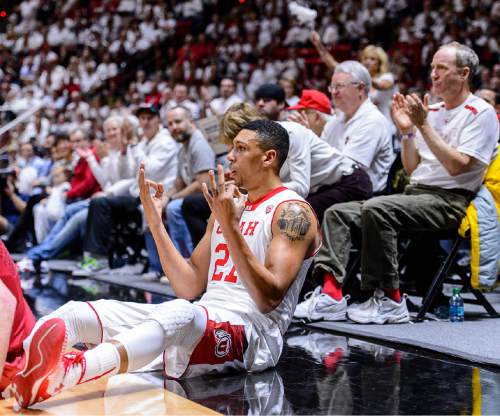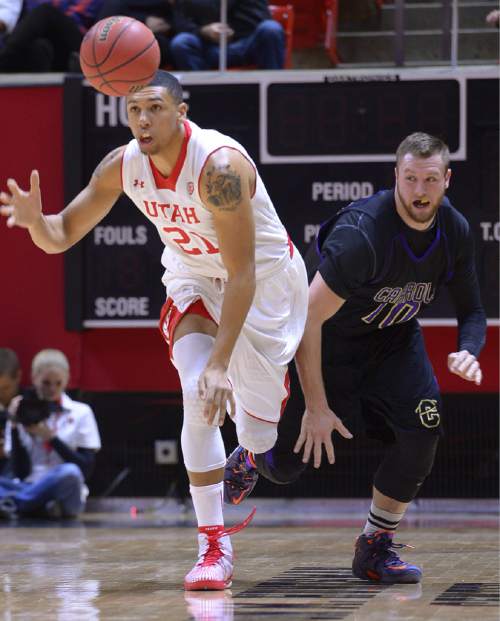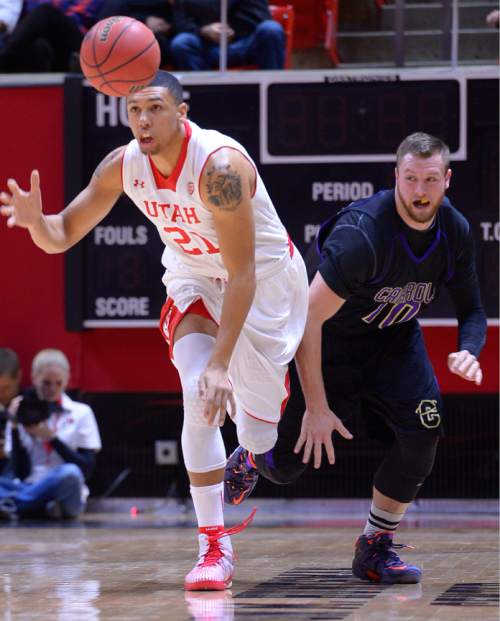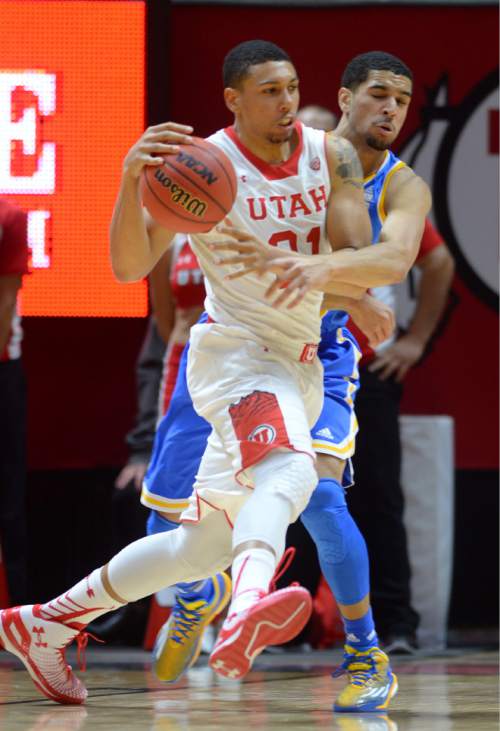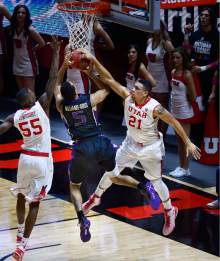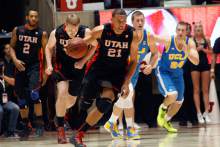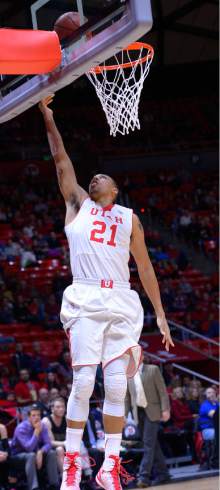This is an archived article that was published on sltrib.com in 2015, and information in the article may be outdated. It is provided only for personal research purposes and may not be reprinted.
The night before Utah played Stanford, Jordan Loveridge was at work.
It's typical for the junior forward to hit the Huntsman Center floor at 8 p.m. a couple nights a week with his father, Bill, rebounding and passing it back. On Wednesday night, they were at it for a while, working on the perimeter, then hitting spots inside.
Jordan doesn't count shots in the season; he shoots until he feels good and stops before he feels burned out. As they walked out of the building, they ran into Brandon Taylor walking in for his own routine.
"That's usually what you expect on this team," Loveridge said. "One of us walks out, another is coming in."
If you asked fans what the Runnin' Utes were missing headed into the season, most would've said 3-point shooting. Utah hit only 35.1 percent of 3-point attempts, ranking No. 140 in the country.
Now, it seems like No. 11 Utah (19-4, 9-2) has a surplus of shooters. The Utes' 40.8 percent clip ranks top in the Pac-12 and No. 9 nationally, and once they start rolling, as many opponents have found, they are tough to stop.
Last week in Boulder, Utah's efficiency beyond the arc ripped apart Colorado just as it looked like the Buffs were starting to contend. Sinking five straight 3-pointers all but sunk Colorado's hopes. Utah has that ability this year.
Utah's motion offense has helped the Utes pass the ball more to open shooters. Utah's average possession is more than 20 seconds, among the longest in the country, and that deliberate pacing tends to open up opportunities on the perimeter, Larry Krystkowiak said.
Assistant Phil Cullen grades every shot attempt after games on a scale from one to five — a five as an open, good shot, and a one as a contested, ugly shot — and most players average about a four in their shot selections.
"We just pick our shots very well," said Taylor, who is averaging 45.5 percent from deep and 53.3 percent in conference play. "We take a lot of pride in that as a team. We don't take bad shots."
Part of the success is also time spent shooting in practice. After some offensive issues last season, assistant coaches persuaded Krystkowiak that shooting should be more of a focus in practices. The Utes now spend about a quarter of practices working on shooting.
Krystkowiak established his reputation on building tough defensive teams, but he is pleased with how the added offensive emphasis has stacked up to a more efficient offense.
"It's like any skill: If you don't work on your passing, you're not going to be a very good passing team, so if you don't work on your shooting, [you don't shoot well]," Krystkowiak said. "It's one of the easiest things to overlook. We built it into our practice plans, and I think there's some benefit to that."
The top shooter by percentage this year is Loveridge, who has improved from a 30.6 percent 3-point shooter last year to 47.1 percent this season, one of the most significant bumps of any player in the country. Loveridge worked with his father to adjust his shooting: He moved his motion a little more to his right, and his shots have more arc than they used to.
But there's plenty of options: Taylor is probably the hottest deep threat at the moment, Dakarai Tucker is plenty capable (35.4 percent), and Kenneth Ogbe (37.8 percent) and Isaiah Wright (39.1) can bring it off the bench. Even freshman forward Brekkott Chapman stretches the perimeter with a 51.9-percent shooting average on 3-point attempts, and he has the green light to hit from deep whenever a defender is foolish enough to leave him alone outside the arc.
There's only one controversial topic when it comes to 3-point shooting: Who's best?
Loveridge was the most diplomatic, saying Taylor's percentage gives him the edge: "Numbers don't lie."
Taylor and Tucker smiled, but declined to give any particular Ute the title. Competitiveness among teammates probably is part of the secret, too.
"I'm not going to say another person is a better 3-point shooter than myself," Taylor said. "Just like Dakarai isn't going to say another person is a better 3-point shooter than he is. We're all competitive. We all like to shoot the ball. It's good for the culture."
Twitter: @kylegoon —
California at No. 11 Utah
P Jon M. Huntsman Center
Tipoff • 6:30 p.m.
TV • ESPNU


